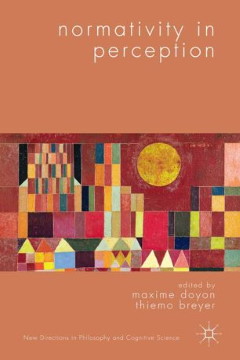Book | Chapter
Social visibility and perceptual normativity
pp. 140-157
Abstract
As some phenomenologists have argued, normativity starts at the level of, or is embedded in, the sphere of perception, thus being neither in the first place a network of explicitly formulated rules, nor a set of cognitive acts of attribution and deliberation. Husserl, in his genetic-transcendental project of Formal and Transcendental Logic or Experience and Judgment, and Merleau-Ponty, in his Phenomenology of Perception, emphasize that any propositional expression with its appeal to a measure of truth and falsity only gains experiential relevance and communicative plausibility through recourse to perception and sensorial receptivity.1 The emerging question of how the normative is concretely intertwined with the perceptual can be studied in the domain of habits, for instance, where we can easily notice how sociocultural norms shape the way we perceive the world. The normality and style of looking at things and persons, of paying or not paying attention to them, is part of our everyday interactions, and it is often hard to say which habitual elements have developed out of conventional linguistic instruction (e.g. table manners) or out of idiosyncratic preferences in sensory stimuli (e.g. certain colors or shapes). 2 In the following, I will focus on the ways that norms and habits shape the way we perceive other social agents and how we interact with them, looking at different types of visibility and invisibility of self and other.
Publication details
Published in:
Doyon Maxime, Breyer Thiemo (2015) Normativity in perception. Dordrecht, Springer.
Pages: 140-157
Full citation:
Breyer Thiemo (2015) „Social visibility and perceptual normativity“, In: M. Doyon & T. Breyer (eds.), Normativity in perception, Dordrecht, Springer, 140–157.


